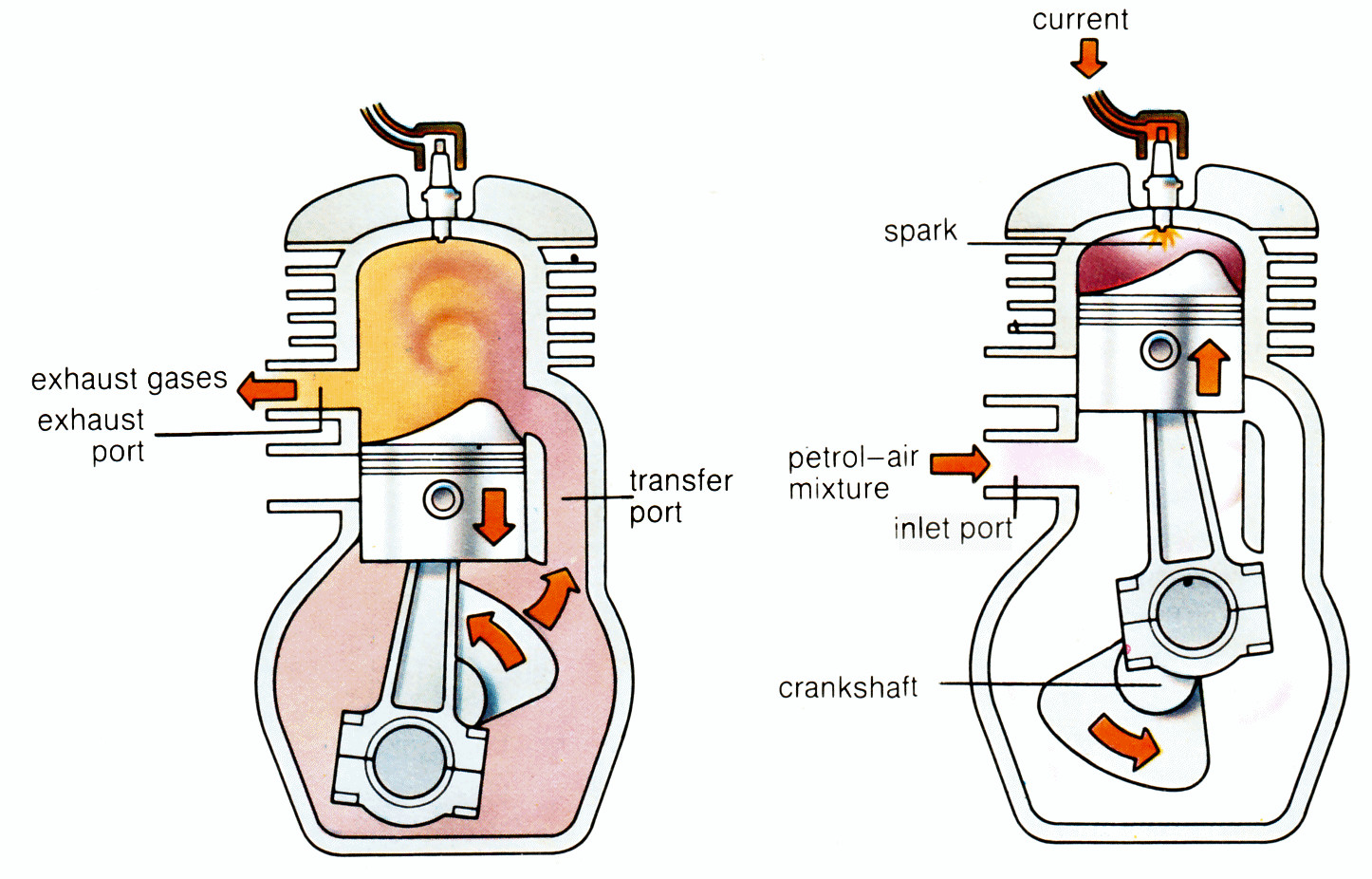For motocross enthusiasts and racers alike, the roar of the engine is synonymous with the thrill of the ride. At the heart of these high-performance machines often lies the potent 2-stroke engine, a powerplant celebrated for its rapid acceleration and raw energy. But what exactly makes the Motocross Bike Engine in a 2-stroke configuration so uniquely suited for the demanding world of dirt biking? The answer lies in its fundamental design and power delivery.
The 2-Stroke Advantage: Power on Every Revolution
The most significant advantage of a 2-stroke motocross bike engine is its incredible acceleration. This stems directly from its combustion cycle. Unlike a 4-stroke engine that fires once every two crankshaft revolutions, a 2-stroke engine ignites the air-fuel mixture with each rotation of the crankshaft. This means power is delivered twice as frequently, resulting in a much quicker surge of acceleration compared to a 4-stroke engine of similar displacement. This immediate power delivery is crucial for navigating the jumps, turns, and varied terrains of a motocross track.
Lightweight Engine Design: Enhancing Agility and Handling
Beyond the power frequency, the design of a 2-stroke motocross bike engine contributes to its performance in other critical ways. Due to firing every revolution, the 2-stroke engine requires less counterweight on the crankshaft for smooth operation. In contrast, a 4-stroke engine needs a heavier crankshaft to maintain momentum through its non-firing strokes, especially at lower RPMs. This inherent simplicity in a 2-stroke design translates to a significantly lighter engine. This reduced weight dramatically improves the bike’s handling, making it more agile and responsive to rider input – essential for quick maneuvers and maintaining control during intense motocross riding. The lighter rotating mass also allows the 2-stroke engine to rev up faster, further enhancing acceleration.
Air-Cooled Simplicity: Robustness for Off-Road Conditions
Many single-cylinder 2-stroke motocross bike engines utilize air-cooling systems. For a single-cylinder engine, air-cooling is a remarkably efficient and straightforward method of heat dissipation. While cooling becomes more complex with multi-cylinder air-cooled engines, for the single-cylinder application common in motocross, it offers a simpler and more robust solution than water-cooled systems. This simplicity is a boon in the demanding off-road environment where reliability and ease of maintenance are paramount. Air-cooled systems are less prone to damage from impacts and require fewer components, contributing to the overall ruggedness of the motocross bike engine.
Displacement and Low-End Torque: Power Where It Matters
The adage “there’s no replacement for displacement” holds true for motocross bike engines. Regardless of whether it’s a 2-stroke or 4-stroke, a larger displacement engine will generally produce more low-end torque. Torque is the rotational force that gets the bike moving and helps pull it out of tight corners and over obstacles. While 2-stroke engines are often perceived as peaky in their power delivery, the available displacement still plays a crucial role in providing the necessary low-end grunt for demanding motocross tracks.
Efficiency Trade-offs: Performance Prioritized
While 2-stroke motocross bike engines excel in power and responsiveness, they are inherently less fuel-efficient than their 4-stroke counterparts. This difference in efficiency stems from how the cylinder is filled and scavenged in a 2-stroke cycle. The volumetric efficiency of a naturally aspirated 2-stroke engine is limited by its design. A 4-stroke engine, with its dedicated intake and exhaust valves, can fill the cylinder more completely, leading to greater efficiency.
To understand this further, consider the simplified mechanics of a 2-stroke. It typically uses a reed valve as a check valve to manage airflow. The air-fuel mixture enters through ports low in the cylinder wall as the piston moves downwards. As the piston moves up, these ports are closed, compressing the mixture. As the piston descends again, it first uncovers exhaust ports on the opposite side of the cylinder, allowing exhaust gases to escape, followed by the intake ports for the fresh charge. The piston crown is often shaped to help direct the flow of exhaust and intake mixture for effective scavenging – ensuring the engine functions correctly by preventing exhaust from exiting through the intake.
 Diagram illustrating the piston movement and port function in a 2-stroke engine
Diagram illustrating the piston movement and port function in a 2-stroke engine
For motocross, the priority is often performance over ultimate fuel economy. The ability of a 2-stroke motocross bike engine to deliver instant low-end torque to power out of turns and then rapidly accelerate to high speeds is paramount. While a 4-stroke might offer better fuel efficiency and potentially more peak power in some configurations, the snappy responsiveness and lighter weight of a 2-stroke often give it the edge in the demanding and dynamic environment of motocross.
Motocross Demands: The 2-Stroke Sweet Spot
Ultimately, the choice of a 2-stroke motocross bike engine is a reflection of the specific demands of the sport. Motocross circuits require bikes that can provide both strong low-end torque for navigating technical sections and explosive acceleration for clearing jumps and gaining speed quickly. The 2-stroke engine, despite its less efficient nature, delivers precisely this combination of performance characteristics. It’s this potent blend of power, responsiveness, and relative simplicity that has cemented the 2-stroke engine’s place as a dominant force in the world of motocross.
